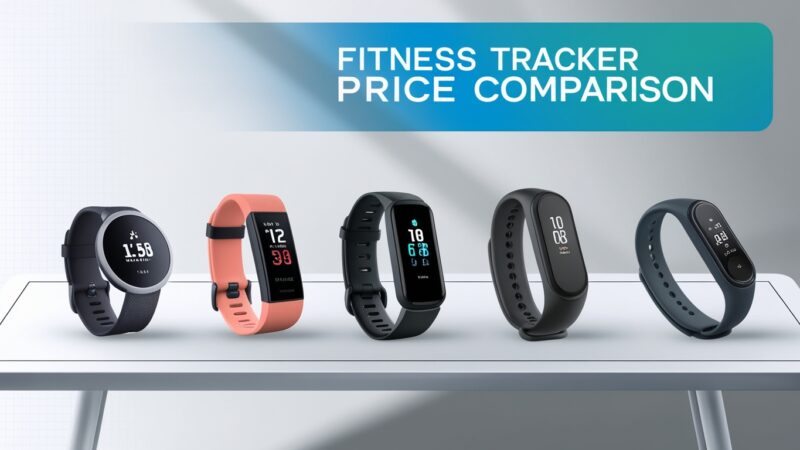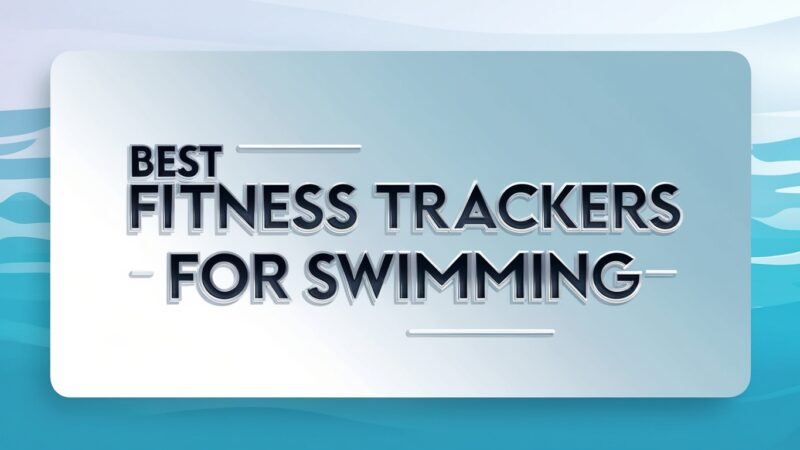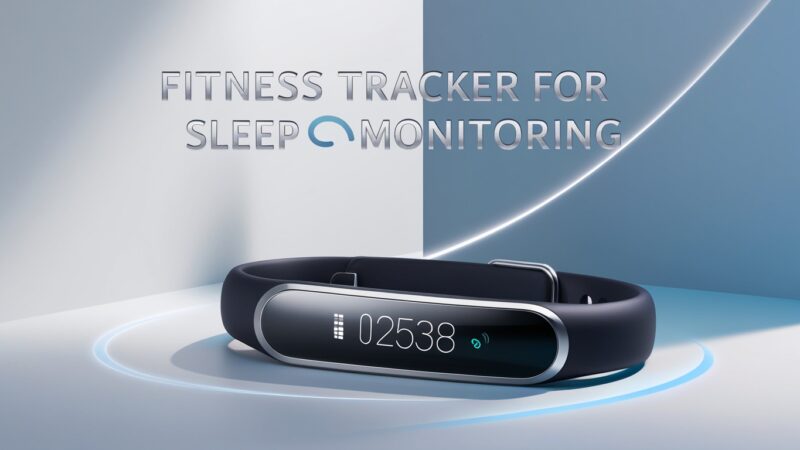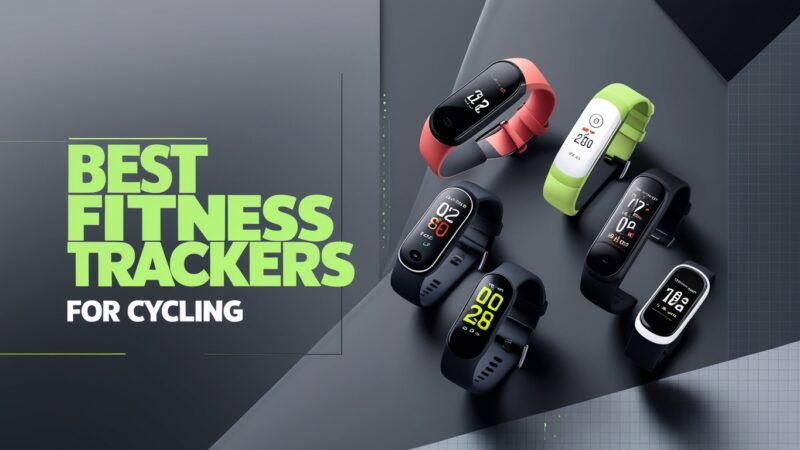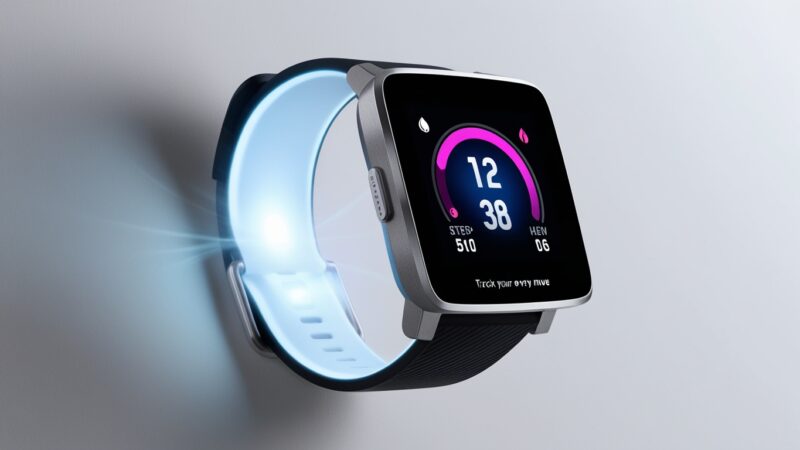Best Fitness Trackers for Cycling: Top Picks
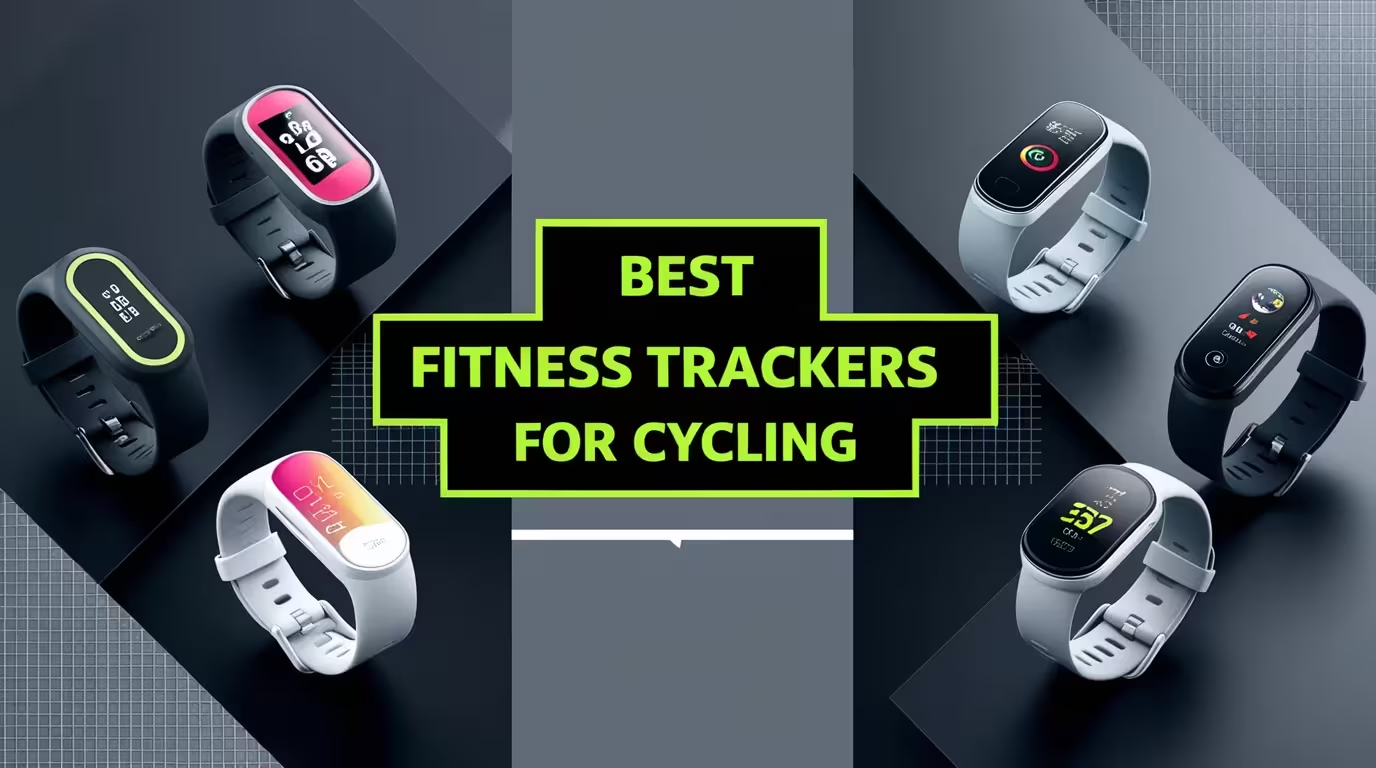
Best Fitness Trackers for Cycling: Features and Benefits
The Importance of Fitness Trackers for Cycling
If you’re like me, you know cycling isn’t just about pedalling away. It packs a punch with health benefits – from boosting your heart health to building muscle strength and stamina. But how can you truly optimize your cycling sessions? That’s where fitness trackers swoop in. These nifty gadgets offer loads of features and insights to help cyclists, whether you’re just starting out or you’re a seasoned pro.
Key Features of the Best Fitness Trackers for Cycling
Choosing the right fitness tracker for cycling can feel a bit like finding a needle in a haystack. Here are the essentials you need to keep an eye on:
Heart Rate Monitoring
Keeping tabs on your heart rate during rides is vital. It helps you maintain the right intensity and keeps your cardiovascular health in check. The top fitness trackers come with advanced heart rate sensors that deliver real-time, accurate data.
GPS Tracking
GPS is a game changer! It tracks your cycling routes, distance, speed, and elevation, giving you the insights you need to see how you’re progressing over time.
Activity Tracking
Look for trackers that dive deep with cycling-specific metrics like cadence, power output, and calories burned. These features help you understand and fine-tune your training.
Water Resistance
Let’s be honest—rain happens! So, finding a fitness tracker that’s waterproof or at least water-resistant is a must. You want a device that stands the test of the elements while you ride.
Battery Life
Long battery life is crucial for those lengthy rides. You don’t want your tracker conking out when you’re in the zone. Look for one that lasts a good full day of use without needing a recharge constantly.
Connectivity and Smartphone Integration
Select a fitness tracker that pairs well with your smartphone. This way, you can get notifications, control your music, and sync data to popular fitness apps to enhance your ride experience.
The Benefits of Using Fitness Trackers for Cycling
Integrating a top-notch fitness tracker into your cycling routine can boost your performance in many ways:
Improved Training Efficiency
By tracking essentials like heart rate, speed, and distance, you can know how your body responds to varied intensities. This understanding allows you to adjust your training for maximum effectiveness.
Goal Setting and Motivation
Fitness trackers help set personal goals and track progress, giving you the motivation to stay on course with your cycling ambitions.
Injury Prevention
Keeping an eye on your body’s performance enables you to spot potential overtraining or imbalances. This way, you can make smart choices that help lower your injury risk.
Comprehensive Performance Analysis
Fitness trackers collect tons of data you can analyze for insights, refining your technique and enhancing your training to keep improving your cycling skills.
Holistic Health Monitoring
Many trackers go beyond cycling—some offer features that monitor sleep quality, stress levels, and daily activity. This gives you a broader view of your overall health.
Choosing the Right Cycling Tracker for Your Needs
Factors to Consider When Choosing a Cycling Tracker
Finding the right fitness tracker can drastically improve your cycling performance and enjoyment. Here’s what to consider:
Battery Life and Charging Considerations
Battery life is non-negotiable. You need a tracker that won’t give up on you during long endurance rides. Look for one that lasts at least a full day and consider fast-charging features for that pre-ride boost.
GPS Accuracy and Connectivity
Accurate GPS is crucial for tracking speed, distance, and routes. Look for devices with high-quality GPS sensors well-suited for even the trickiest terrains.
Cycling-Specific Features
Seek out trackers tailored specifically for cycling, such as:
- Cadence and Power Monitoring: These metrics enhance your pedalling efficiency and training optimization.
- Bike-specific Tracking: Trackers that auto-detect when you’re cycling can start recording data instantly.
- Customizable Data Fields: Customization lets you display metrics that matter most to you on-screen.
- Interval Training Support: Some trackers feature interval timers and workout plans specific to cycling.
Durability and Water Resistance
Your fitness tracker should endure the rough and rugged nature of cycling. Aim for devices with solid construction and high water resistance ratings, like IPX7 or IPX8. That way, it can brave any unexpected weather or even accidental splashes!
Compatibility and Integration
Make sure your cycling tracker can easily sync with your compatible devices and fitness software. Look for trackers that mesh seamlessly with apps like Strava or TrainingPeaks for a smooth data experience.
User Experience and Ease of Use
The user-friendliness of a cycling tracker can’t be overstated. Choose one with an intuitive interface you can navigate easily, even mid-ride. Also, check for companion apps that offer a smooth data-viewing experience.
Taking these factors into account will help you pick the best cycling tracker to support your fitness goals and ramp up your cycling performance.
Integrating Cycling Trackers into Your Training Regimen
Optimizing Your Cycling Performance with Fitness Trackers
If you’re serious about cycling, incorporating the best fitness trackers into your training can revolutionize your performance and fitness journey. From heart rate tracking to cadence analysis, these devices can provide critical insights for becoming a stronger cyclist.
Heart Rate Monitoring
Heart rate is a huge metric for cyclists. Tracking it with a quality fitness tracker gives you insight into your body’s reaction to various intensities. By understanding your heart rate zones, you can adjust your effort and pacing for more effective workouts.
Distance and Elevation Tracking
Fitness trackers with GPS and elevation sensors can accurately log your rides, including distance and elevation gain. This data lets you identify areas to work on and set personal records over time.
Cadence and Power Measurement
Measuring your cadence—how fast you’re pedalling—can significantly impact your riding efficiency. Some premium trackers even integrate with power meters, allowing you to monitor your output and hone your technique.
Customized Training Programs
Fitness apps connected to your tracker often offer personalized training plans tailored to your data. These structured programs can include interval sessions, hill repeats, and vital recovery days essential for maximizing your performance.
Comprehensive Data Analysis
Utilizing fitness trackers for comprehensive data analysis can take your cycling to the next level. By tracking metrics like average speed and recovery times, you can identify areas to refine your approach and set benchmarks.
Improved Recovery and Injury Prevention
Fitness trackers also help monitor sleep and recovery metrics, crucial for injury prevention. Keeping a close watch on your body’s need for rest can minimize the risk of overtraining while helping you train consistently.
Embracing the best fitness trackers for cycling can greatly transform your training. Use the insights gained to optimize your workouts, track your progression, and make informed adjustments for becoming a more efficient cyclist. Get ready to take your cycling performance up a notch!
Analyzing Data from Cycling Fitness Trackers
Exploring the Power of Cycling Fitness Trackers
If you’re like me, you realize that data is your best friend in cycling. Fitness trackers have changed the game by providing deep insights that help in refining your training, monitoring progression, and hitting your goals. Let’s dive into the data they deliver and how to effectively analyse it.
The Data Goldmine: What Cycling Fitness Trackers Measure
These trackers come armed with sensors measuring a broad spectrum of metrics, including:
- Distance traveled
- Speed
- Time
- Heart rate
- Cadence
- Power output
- Elevation gain
- Calories burned
- GPS location
By delving into this data, you can better understand your cycling performance and pinpoint areas that need improvement.
Uncovering Insights: Analyzing Cycling Fitness Tracker Data
The true power of these trackers lies in the insights they offer. Here’s how to make sense of the numbers:
Performance Metrics
Keep an eye on your speed and heart rate to reveal invaluable insights about your fitness and training effectiveness. For instance, if your average power output declines on long rides, it could mean adjusting your pacing is necessary.
Training Load and Recovery
Trackers often provide data on your training load, considering duration, intensity, and ride frequency. Watching your heart rate variability helps in determining when to rest, keeping your training smart and effective.
Route and Terrain Analysis
Your GPS data lets you map out routes and assess the terrains you’re tackling. This can guide future rides and help pinpoint challenging parts of your path.
Comparative Analysis
Comparing your data across multiple rides or even against other cyclists can spotlight areas to work on and motivate you as you benchmark your progress.
Turning Data into Action: Optimizing Your Cycling Performance
- Personalize your training: Use the data to craft a custom training plan focusing on your unique strengths, weaknesses, and goals.
- Adjust your pacing and effort: Keep track of power output and heart rate to pace yourself better on rides.
- Enhance your recovery: Use training load data to strategize your rest and recovery, preventing overtraining while maintaining peak performance.
- Explore new routes and challenges: Use GPS data to discover fresh paths that align with your current fitness level.
By harnessing the incredible insights of cycling fitness trackers, you can elevate your cycling performance, unlock your full potential, and meet your cycling goals confidently.
Comparing Top Cycling Fitness Tracker Brands
A Comprehensive Look at the Best Fitness Trackers for Cycling
When tracking your cycling performance and progress, picking the right fitness tracker can be an absolute game-changer. With plenty of brands vying for your attention, it’s vital to know which ones are worth your investment. Let’s examine some top cycling fitness tracker brands and their standout features.
Garmin: The Cycling Enthusiast’s Choice
Garmin has built a reputation as a cycling powerhouse. Their devices, like the Forerunner series, come packed with essential features such as GPS, heart rate monitoring, and custom data setups. The Forerunner 245 Music even allows you to store and play your favourite tunes straight from the watch!
Fitbit: Versatility and User-Friendly Design
Fitbit isn’t just a fitness tracker; it’s a versatile companion! The Charge 5 model offers extensive tracking capabilities, including heart rate, GPS, and cycling-specific metrics like cadence. Plus, with their user-friendly app, diving into and analysing your data is a breeze.
Apple Watch: Seamless Integration with iOS
If you live in the Apple ecosystem, the Apple Watch is a top contender. Models like the Series 7 provide advanced cycling metrics, automatic workout detection, and connect easily with popular cycling apps for a streamlined experience.
Polar: Precision and Advanced Metrics
Polar stands out with its focus on precision and in-depth performance tracking. Their trackers, such as the Vantage V2, offer detailed metrics on power output, recovery time, and training load for those keen on optimizing their cycling.
Suunto: Rugged and Adventure-Focused
If you thrive on adventures, Suunto’s trackers cater to outdoor enthusiasts. The Suunto 9 Baro, for example, boasts a tough design, GPS tracking, and superior navigation, perfect for cyclists tackling rugged terrains.
Finding the best fitness tracker for your cycling routine hinges on your specific goals and preferences. Knowing the strengths of various brands enables you to make an informed choice that aligns with your fitness aspirations. Unleash your cycling potential and elevate your experiences!
You can now buy my E-Book on Discount for only $4! If you need personal help or a program, you can reach out to me on Instagram!
Emerging Features in Fitness Trackers for Cycling
With technology ever-evolving, the latest fitness trackers are introducing exciting features that can revolutionize your cycling experience. Here’s what to look out for:
Smart Coaching and Adaptive Training Plans
Some trackers now offer AI-driven coaching that adapts training plans based on your performance data, recovery metrics, and personal goals. This level of personalization can seriously enhance your training regimen.
Blood Oxygen Saturation Monitoring
High-end models often include SpO2 sensors that monitor your blood oxygen levels during rides. This feature can help you gauge how well your body is adjusting to different altitudes, ensuring you remain safe and effective during training.
Solar-Powered Options
Imagine a fitness tracker that harnesses solar energy! Some brands are integrating solar panels into their designs, greatly extending the battery life. This functionality is perfect for those long rides where charging options may not be readily available.
Real-Time Cycling App Compatibility
Increasingly, fitness trackers are syncing seamlessly with advanced cycling apps, like Wahoo and Zwift. This integration allows you to manage your ride more effectively, accessing maps, route suggestions, and community features right from your wrist.
Enhancements in User Experience
User experience is crucial for fitness trackers, especially for cyclists who need something that’s easy to navigate mid-ride. Here are some advancements in this area:
- Touchscreen Displays: Many new models come with high-resolution touchscreen displays, making it easier to view metrics without interrupting your ride.
- Voice Control Features: Hands-free operation is a bonus! Some trackers now offer voice commands, allowing you to control functions without stopping.
- Custom Notifications: Trackers that allow customizable notifications can help keep you focused, providing alerts only for what matters most while riding.
Safety Features
Safety should always come first. Look out for these vital safety features in new fitness trackers:
- Fall Detection: Some trackers now include sensors that detect falls. If an accident occurs while cycling, it can automatically alert your emergency contacts.
- Incident Detection: Similar to fall detection, this feature triggers an alert to your phone if it senses a potential crash, providing an added layer of safety.
Current Market Trends for Fitness Trackers
The fitness tracker market is buzzing with new trends that can benefit cyclists greatly:
- Wearable Technology Evolution: Expect to see advancements in biometrics, like ECG monitors and temperature sensors, enhancing overall monitoring capabilities.
- Increased Emphasis on Health Tracking: Cyclists are increasingly looking for versatility. Trackers that offer comprehensive health metrics, like stress monitoring and menstrual cycle tracking, are becoming essential choices.
- Integration with Smart Ecosystems: More brands are focusing on developing devices that work well with smart home ecosystems, creating a seamless transition between fitness and daily life.
By staying informed about these new features and trends, you can ensure that you’re not just choosing a basic tracker but one that meets all your cycling needs. The best fitness trackers for cycling are more than just a monitoring device; they’re about enhancing your overall cycling experience.
For more information, explore our website. You can find answers to common questions in our FAQ section, learn more about us on our Home page, discover the range of services we offer in the What We Provide section, get in touch with us through the Contact page, and stay connected with us on our Socials.
You can now buy my E-Book on Discount for only $4! If you need personal help or a program, you can reach out to me on Instagram!

